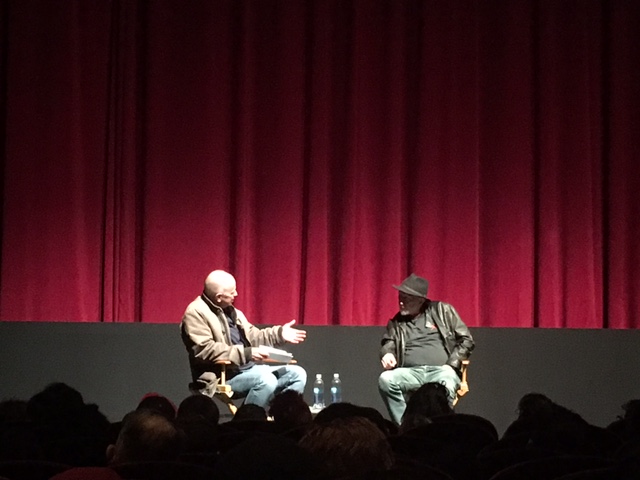
Known for their past critically acclaimed and celebrated comic collaborations such as Batman: The Dark Knight and Daredevil, as well as their own projects independent from one another, Miller and Janson discussed a variety of subject matter on stage from the remarkable life and career of Eisner to their own personal experiences in the comics industry. Here are some of the highlights:
-Miller can’t recall the exact year he met Eisner, only that it was at a party with other creators in the 80’s that eventually developed into a close friendship until Eisner’s passing in 2005. Janson regrets never having a chance to meet Eisner.
-As Miller has said many countless times in the past, he owes a huge debt of gratitude to Eisner in particular how he unashamedly copied the introduction of the character Sand Saref in Eisner’s The Spirit for his first issue of Daredevil that debuted Elektra.
-Eisner was very adamant with how a comic panel should capture one moment in time.
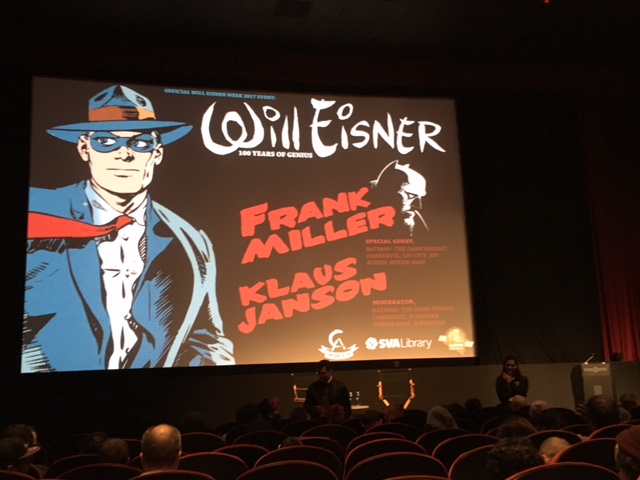
-Apparently Eisner refused to acknowledge the influence of cinema on comics. Miller feels this was due to Eisner’s desire to have the art form treated seriously and believed that associations with pop culture would lower the status of comics.
-Eisner wasn’t impressed when Jerry Siegel and Joe Shuster pitched him Superman.
-When Miller visited Eisner’s studio in Florida, he was surprised to see for himself the modesty of Eisner’s art supplies and setup.
-Advice Miller shared with budding creators breaking into the industry: pick the loser books to work on. If a book is doing well, you’ll only be compared unfavorably to the previous creative team no matter how good you are. The sales of Daredevil were so bad by the time Miller joined the book that it was nearly going to be canceled.
-The advice Miller received from artist Neal Adams when he moved from Vermont to New York to become a comic creator: “Go back to Vermont and pump gas.”
-After eventually wearing him down, Adams got Miller his first assignment drawing a short story in a Twilight Zone comic from Gold Key. Miller said he was delighted to get the chance to draw Rod Serling.
-While Spider-Man had an amazing rogues gallery like Doc Ock, Miller was extremely dissatisfied with Daredevil’s lackluster villains like Stilt-Man or Gladiator but he and Janson made due. Not surprising to learn Miller brought in Spidey villains whenever he could, most noticeably Wilson Fisk/Kingpin.
-Miller views his original run on Daredevil with Janson as one long story between 4 central characters: Daredevil/Matt Murdock, Elektra, Bullseye, and Kingpin.
-Janson also mentioned Daily Bugle reporter Ben Urich as another pivotal character in their Daredevil run. Though he didn’t create the character, Miller divulged his take on Urich was inspired by the title character in the TV show Kolchak: The Night Stalker.
-Both Miller and Janson had high praise for letterer Joe Rosen and the great work he did lettering each issue by hand.
-Janson noted that Miller has said that his favorite line he’s ever written is from a panel in The Dark Knight Strikes Back that succinctly describes the powers of the Atom, “Ray Palmer/The Atom/He Gets Small”
-This led to a discussion of the powers other superheroes, in particular Green Lantern which Miller considers a terrible name. Because of Green Lantern’s ability to create nearly anything with his power ring, Miller believes he has to be one of the “stupidest” people hence how Miller portrayed him in All-Star Batman & Robin, the Boy Wonder.
-Any fans out there still holding out for the next issue since issue #10 came out in 2008 may be happy to hear that Miller said that he recently spoke with artist and DC Comics Co-Publisher Jim Lee about returning to finish the All-Star Batman & Robin book they started over a decade ago.


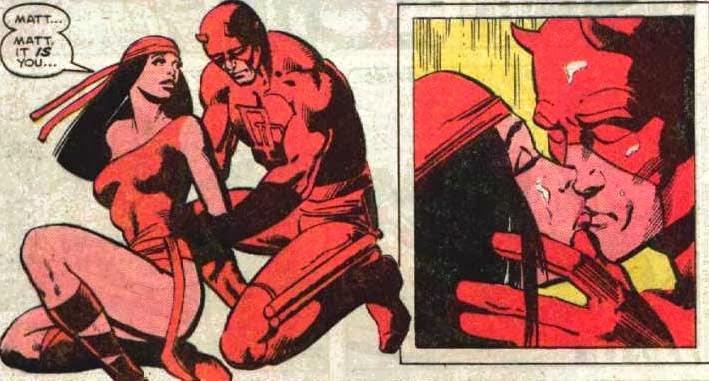
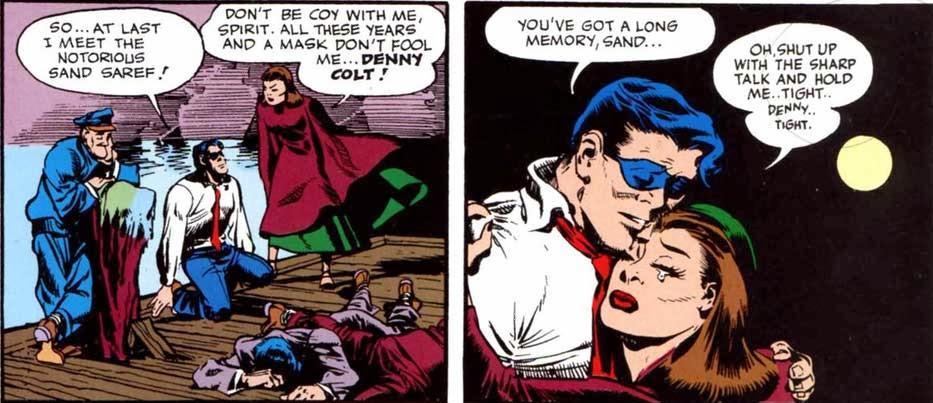
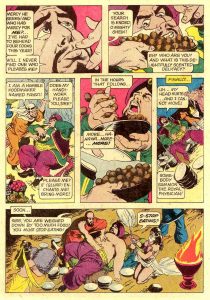
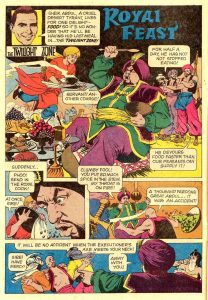
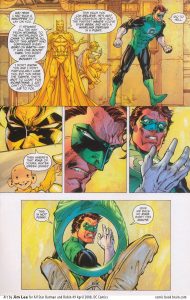
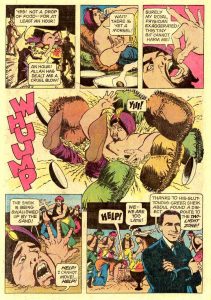

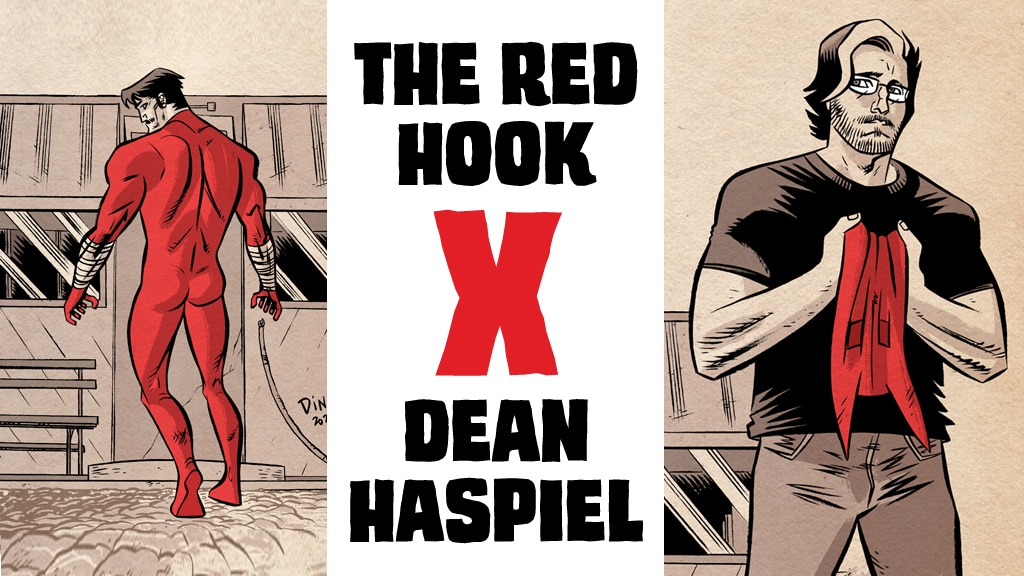
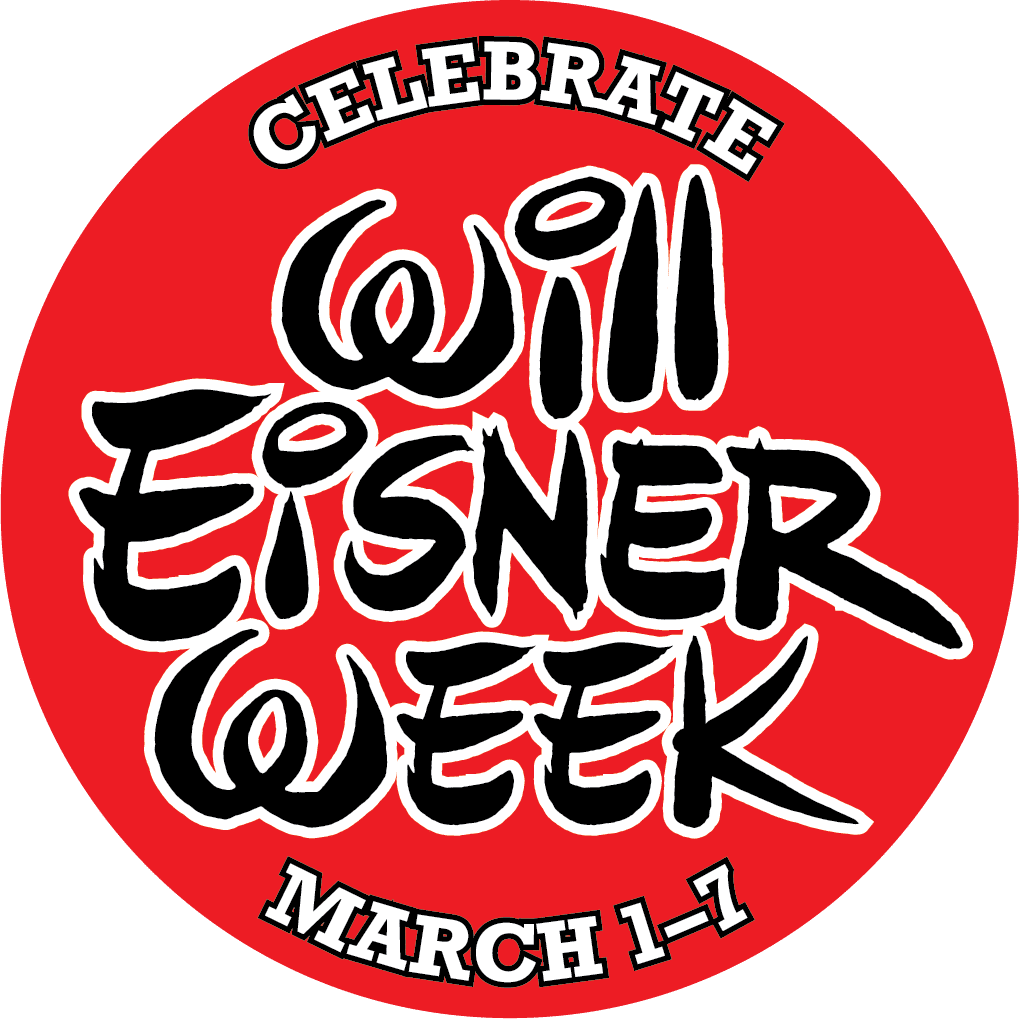



Leave it to FM to make it (mostly) about himself — lol!
“Eisner refused to acknowledge the influence of cinema on comics”
on the other hand i’m not sure most movie makers acknowledge the influence of comics on cinema, so quite fair in my opinion :-)
Orson Welles told friends that the early Batman comics influenced the look of CITIZEN KANE. (He was only 24 when Detective #27 was published.) But I don’t think he talked about this in interviews or speeches.
I do remember Eisner talking about cinema’s influence in the first interview I read with him, a 1979 two-partner in the Comics Journal. IIRC, he mentioned Fritz Lang, Hitchcock, and film noir in general. And experimental films by Man Ray. Again: IIRC. I don’t have those CJ issues anymore.
George – Do you have a link or any idea where you found the info about Welles being influenced by Batman? Sorry to doubt, but I haven’t heard that one before and am unsure what the influence could be from Batman to Kane, Welles may have only been 24 at the time of release but he was already an established theatre and radio director at that time.
I’m just wondering if perhaps it’s a spoonerism of Batman 1989 taking visual cues from Citizen Kane, and Mark Millar’s unearthing Welles designs for a abandoned Batman movie hoax.
Fascinating if true and a shame Bob Kane never heard it so he could take credit for that one as well!
Film historian Joseph McBride, who knew Welles in the last 15 years of his life, mentions this in one of his books on Welles. I think it’s this one:
https://www.amazon.com/What-Ever-Happened-Orson-Welles/dp/0813124107/ref=sr_1_7?ie=UTF8&qid=1491588454&sr=8-7&keywords=joseph+mcbride
The Batman influence on KANE was in the visuals: the Gothic style, the Expressionist use of shadows and props. (doors that seem to be 100 feet tall, etc.) The Kane-Robinson art of 1939-41 was very stylized, just as KANE was very stylized for a movie of its time.
Batman wasn’t the only influence on KANE’s look, of course. There was also German Expressionism and everything directed by John Ford.
A director that Eisner once cited as an influence, Fritz Lane, told interviewers that he learned English from reading comic strips. Too bad Lang demonized comic books in one of his later films, WHILE THE CITY SLEEPS (1956), where a psychotic rapist-killer is naturally addicted to comics.
Oops, that should be “Fritz LANG” above.
That’s an interesting bit of trivia, George. I wonder if the Wertham hysteria rubbed off on Lang at all.
Thanks George, very interesting. Knew the expressionism influence, but Robinson’s Batman art is a new one. I assumed back then that the influence was from cinema to comics until a generation or two of filmmakers later.
Shame that as a fan Welles never tried his hand at a comic!
Kyle: There’s a scene in WHILE THE CITY SLEEPS where a reporter (played by Dana Andrews) goes on TV and addresses the killer — who is naturally watching and clutching a comic book in his sweaty hands.
Andrews tells the killer what the newspaper knows about him — that he’s a coward, a momma’s boy, hates women, etc. But he saves the most damning charge for last:
“You read the COMIC BOOKS!”
With this, the comic book slips from the startled killer’s hands and falls to the floor.
The killer, BTW, is played by Drew Barrymore’s tragic father, John Barrymore Jr.
SVA just posted a video of the talk :
[youtube https://www.youtube.com/watch?v=s–asnHjWEw&w=560&h=315%5D
Comments are closed.